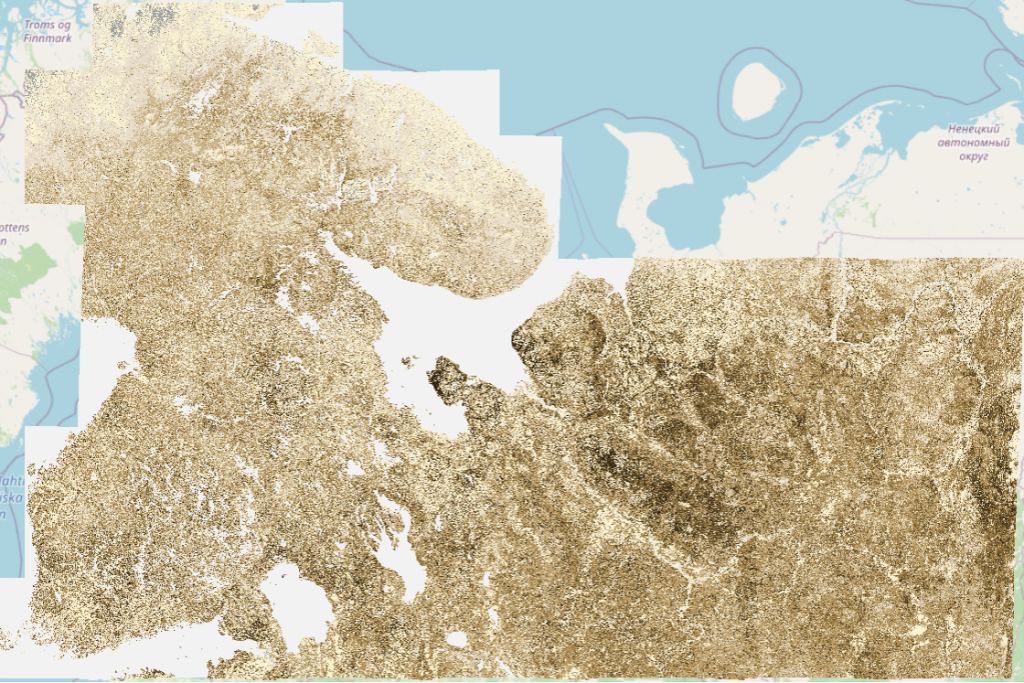First large scale forest variable maps processed in Forestry TEP for the Assesscarbon project

In our previous Assesscarbon blog post, we told how the project had reached an important milestone and was ready to start implementing a processing pipeline for forest biomass and carbon monitoring into Forestry TEP. Since then, VTT Technical Research Centre of Finland and Simosol Oy have successfully implemented an automated processing pipeline into the Forestry TEP platform to process the project output layers of Growing Stock Volume (GSV), Gross Primary Production (GPP), Net Primary Production (NPP) and Stem Volume Increment (SVI).
We are now happy to present the first output layer, Growing Stock Volume (GSV), covering the target area consisting of 214 Sentinel-2 tiles (see the image above or browse in full resolution here). The layer provides estimates at 10 m spatial resolution for an area covering the entire Finland and the Russian boreal forests until the Ural Mountains. It is based on the cloud free Sentinel-2 composite produced by Terramonitor (Satellio Oy), and a VTT Probability model created utilizing the composite data and 3471 Finnish Forest Centre field data plots.
Following the finalization of the structural forest variable estimation, processing of the dynamic forest variable output layers (GPP, NPP and SVI) in Forestry TEP has started. The dynamic forest variable layers are produced using process based models developed by the University of Helsinki. They use a set of structural forest variables (basal area, height, diameter, species and site type) and climate data as input to provide information on carbon sequestration in forest ecosystems.
Overall, the project has already demonstrated the suitability of the Forestry TEP platform and the chosen methodological approaches for the estimation of forest volume and biomass on large areas. Successful processing of the dynamic forest variables in the near future will highlight the usability of the system and processing concept. The system is applicable for modelling carbon sequestration in a scalable fashion. It supports forestry stakeholders in their forest management decisions and reporting.
